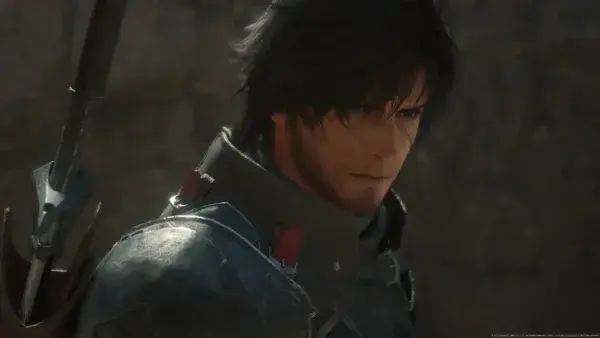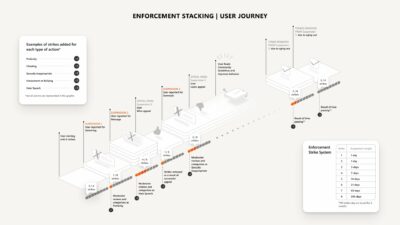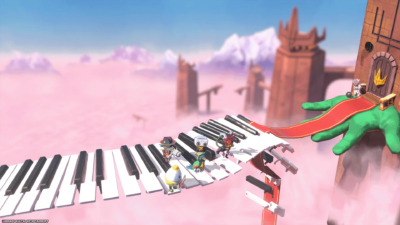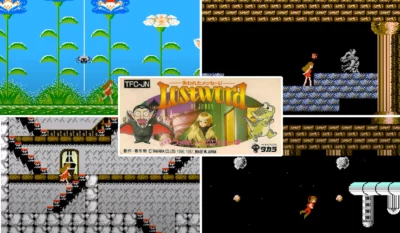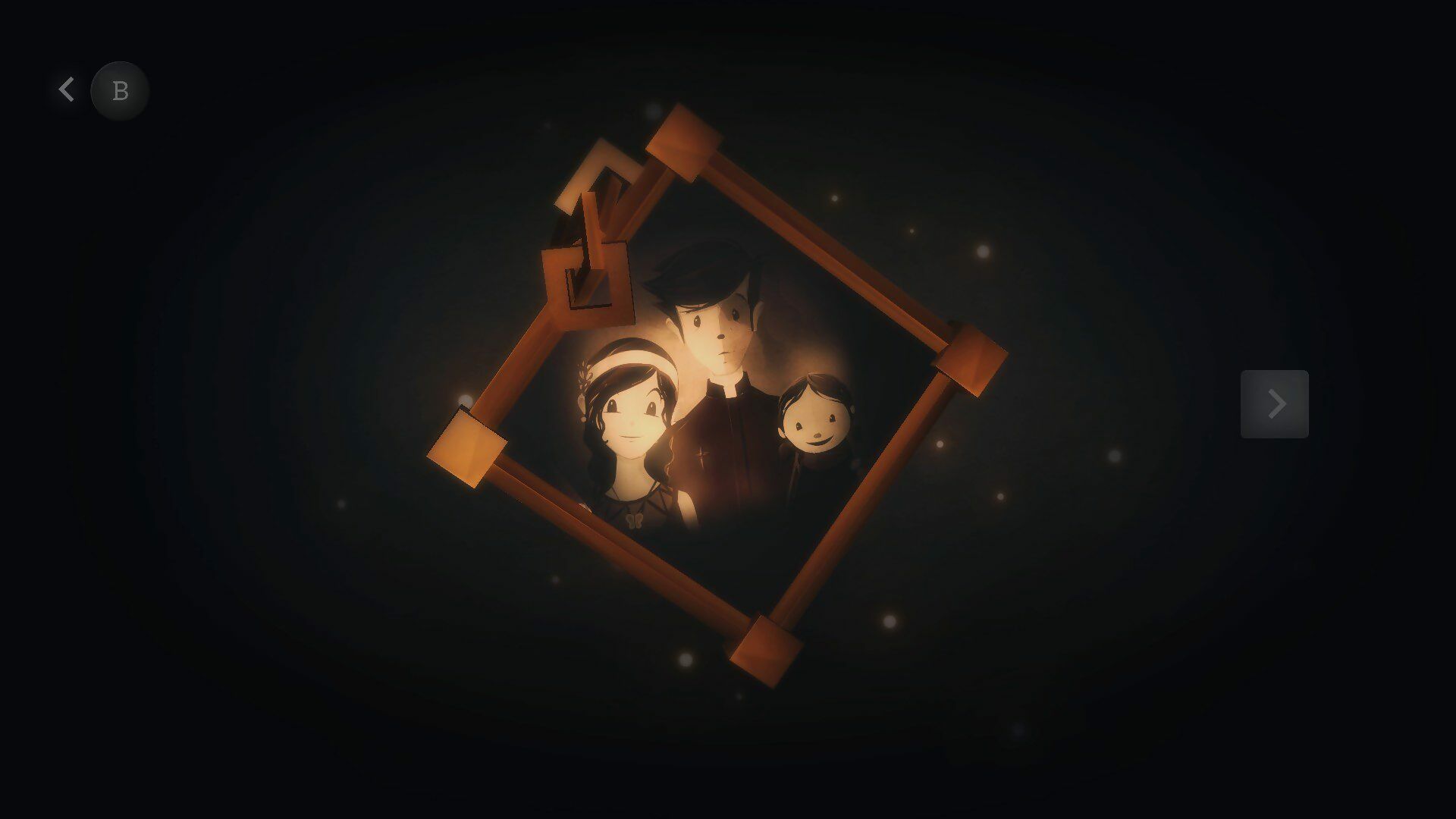
Likely up there with scaling Mount Kilimanjaro or replacing a spark plug, creating a video game solo seems like an insurmountable thing – not least due to the many skill sets required. Writing, art, music, code, programming: all these disciplines go into the adventures and worlds that make up our favourite pastime.
Knowing this makes it even more mind-numbing to think of such weight resting on just one person’s shoulders. And yet, thanks to the increased simplification of development tools and game engines today, there are those out there doing it.
Thomas Brush, art director and founder of Atmos Games, was one such indie developer, pouring every ounce of time and passion he had into his first commercial game. Pinstripe is a darkly delightful 2D puzzle-adventure that originally saw release on Steam in April 2017.
But as with most solo projects, the road to launch would turn out to be a long one. “I started making games when I was in high school,” says Brush, regarding his early beginnings as a one-man studio. “I made Flash games and released them online for free. This led to my first Flash game, Coma, which went viral and now it’s at almost eight million plays. After that, I then knew that I wanted to make games.”
With a hit on his hands, Brush’s ambitions for his next title suddenly became loftier. But if you think that meant having access to all the necessary funding, think again, as Pinstripe’s development began in the humblest of places, “in the basement of my university’s library and my dormitory,” Brush reveals. “It then started following me through to my marriage, and I would work in the evenings, at lunch, and in the mornings on that game while I was working my full-time job.” After three years toiling away in the free spaces between his professional life, Brush went on to find success on Kickstarter.

Thomas Brush, live and in person.
Community support
“I’ve been a little scared to launch a Kickstarter,” read a post on Pinstripe’s crowdfunding page. “I’m here to ask the community for support to continue and complete Pinstripe. It’s not only exciting to potentially get funding from you guys, it’s also exciting to get some much-needed community support.”
Like so many solo indie devs struggling to gain the attention of major game publishers, Brush opted to circumvent the traditional route and asked players themselves to believe in his. Tim Schafer’s Double Fine famously did so in order to gauge interest in old-school adventure games – a move that led to the release of 2014’s Broken Age. Why couldn’t Brush do the same?
Pinstripe’s crowdfunding campaign went on to amass nearly three times its original goal, all thanks to the backing of nearly 4,000 players who couldn’t wait to venture though the game’s unique depiction of Hell. Centring on a former minister, Teddy, who is tasked with venturing through the frozen depths of the underworld in search of his kidnapped daughter, Pinstripe is, according to Brush, “an emotionally charged story about fatherhood.”
With this core motivation, players are required to solve puzzles, defeat hellish creatures, and appease the needs of an eclectic cast of characters – all without giving in to the taunts of Pinstripe’s eponymous antagonist.
When asked about his original inspiration for Pinstripe, the thinking behind such dark and potentially serious subject matter becomes clear. As Brush explains: “I really like movies like What Dreams May Come and Constantine, along with stories like The Great Divorce [by C.S. Lewis].
The afterlife is really fascinating, and I think it’s a discussion that more Americans really need to have,” he reveals. “I think it might be a little bit presumptuous to assume that there’s no afterlife, regardless of your religious beliefs – to think that there’s nothing behind the curtain of this world. It’s an interesting discussion and I wanted to put that into a game.”

Ted’s visit to the underworld.
Give them hell
A far cry from the typical red and flame-filled depictions of Hell we’re so used to seeing in games like Doom and the Diablo series, Pinstripe instead chooses to take a more ethereal approach. For Brush, making this version of Satan’s sanctum unique was crucial to Pinstripe having key appeal and helping it stand out in an increasingly crowded market.
That, along with the art’s notably Tim Burton-ish, fairytale-esque style. “For one thing, this version of Hell is frozen over, which is an interesting thought,” says Brush. “It also plays into the popular ‘Hell frozen-over’ phrase. It’s also unique in that it’s more about an inner hell or the hell inside an individual and in their heart – as opposed to some entity punishing you in a lake of fire. It’s more of a personal story than one you have no control over.”
Taking in the eerily creepy sights, poking around in every nook and crevasse is key to helping Ted retrieve his daughter from the grasp of the evil Mr Pinstripe in time. Doing so will see players traverse through the increasingly strange levels of Hell, while constantly questioning the meaning and link between the (seemingly) separate-looking scenarios occurring around them.
In terms of what Brush hopes players will take away from Pinstripe, he says: “I really want players to feel poignant at the end of the story. I want them to feel like Teddy may have made a lot of mistakes, but was able to find redemption in the midst of everything around him, condemning him.
“The game is about a guy who is looking for his daughter in Hell, and my wife gave birth to a baby girl earlier this year. I guess the understanding of Teddy’s relationship with his daughter, Bo, has become manifest in me, more so than when I was actually making the game,” continues Brush. “So, the story means more to me now than it did when I was actually making it, which kind of feels serendipitous.”
Sticking with his close personal alignment to the game and the themes at play in Pinstripe’s short but profound two-hour adventure, it isn’t lost on Brush how hellish developing a game solo can feel at times. “It’s lonely. Oftentimes, you’re punishing yourself, feeling critical about the work you’re doing, and feeling unworthy of such a daunting task,” he says. “If that’s not a small bit of hell, I don’t know what is.”

The eponymous antagonist, Mr Pinstripe.
Lessons learned
In addition to developing games, now as part of a slightly larger team forming Atmos, Brush finds solace in providing help to others thinking about doing the same – whether via his creator-focused podcast, PlayJob, or his studio’s own YouTube channel. Using his own experiences developing Coma and Pinstripe, Brush continues to share tips on how to avoid the typical trappings of indie development, along with the lessons he learned.
Regarding the one-man studio approach, “I’d encourage people to go solo on at least one project,” he says. “It doesn’t have to be a big project, but just one project. Not because it’s a profitable thing to do financially, but mainly because you learn so much. If you’re going to be an indie game developer it’s really important for you to learn the ins and outs of the industry – artwork, music, design, and development.”
Undertaking side projects like this is also a healthy approach some developers might gain value from, Brush finds. Rather than stay encased within an isolated setting with potentially you as your own worst enemy, it’s important to stay engaged with both creators, as well as those you’re making the game for. “I’m really enjoying livestreaming right now,” Brush tells us.
“So, I livestream on my YouTube channel and it’s really fun to have people hang out with me while I work and ask questions about how I do things. It also motivates me to work hard and not be distracted my watching YouTube videos, reading articles or something.”
If that wasn’t enough to keep Brush and his team busy, Atmos Games has also been hard at work increasing scope and getting Pinstripe into the hands of as many people as possible. Following initial release on Steam in 2017, the journey of Brush’s first, fully-fledged indie title at last made it to the shores of Switch, PS4 and Xbox last October – this time with a little help from specialist publisher, Serenity Forge. It’s the end of a chapter for Brush, as he highlights another potential pitfall solo developers should avoid becoming too obsessed by: negative reviews.
“It was really difficult for me to find joy in the positive reviews by the time Pinstripe had released, especially when we launched on Steam, because we had one very bad review, and I kept mulling over that as opposed to enjoying the positive ones,” continues Brush.
“In the midst of all the positive reviews, that one negative review sort of inspired other blogs to use the same kind of language and coring about the game. And so, it brought our score down and I was really frustrated with that.”
This insistence on listening to the vocal minority rather than the various others championing your piece of art proves to be a challenge all developers – indie or not – are forced to overcome. Especially when such criticisms are so easily proven to be unfounded.
For Brush, this proved to be a valuable lesson. “I’ve learned to let that go,” he says. “Now that I’ve released on Xbox, PlayStation and Nintendo Switch, I’ve found that reviews don’t really mean much, mainly because we’re getting great reviews on Switch and it’s basically the same game.”

Puzzle-solving is indeed the concept of hell to some folks.
Full circle
Speaking to the future, and development to Brush’s original viral hit, Coma, is in full swing – this time with a team of others, as well as the online community, surrounding him in support. “Currently, my studio is working on Once Upon a Coma, which is a game about a little boy who wakes from a coma only to find his parents are missing and all of the adults are nowhere to be found.”
Very much cut from the same cloth as Pinstripe, it’s a “creepy side-scroller adventure, but it focuses on childhood, innocence, and the perversion of that innocence as we begin to grow older.”
All this is to say that, despite how impossible the mountain of developing a game might appear, there’s great value in the experience. Even when going through Hell and back, there’s light at the end of the tunnel – something Brush knows all too well.
“Me and my wife are in transition, because we’re building a house and I usually work from a studio space in our home,” he says. ”I’m actually working in my parents’ basement as it’s the only place available. It’s funny, because I started making Coma, my first game, in my parents’ house, and now I’m working on its sequel a decade later in the exact same house.”


